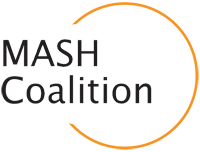NET Metering Successor Tariff
NEM 2.0
Net metering (NEM) is the mechanism by which property owners get credit off their monthly utility bill equal to the value of the solar power they produce onsite. Virtual net metering (VNM, a.k.a. VNEM for Virtual Net Energy Metering) is the arrangement by which solar produced from a single PV system is credited against all of the selected meters at a property, including any number of house meters as well as individual residents’ accounts, as designated by the property owner. VNM, originally created specifically for the MASH program, is essential to making multifamily affordable housing solar economically viable.
Solar has permanently disrupted the utility business, and changed the economic basis for CPUC electricity regulation. In response, AB 327 (Perea, 2013) directed the CPUC to establish the next generation of net metering rules, dubbed “NEM 2.0”, including the mandate for an “alternative tariff” specifically for “disadvantaged communities.” The initial NEM 2.0 decision to help achieve this “historic transition” in energy markets was issued in January 2016. As advocated by the MASH Coalition, the decision affirmed and extended VNEM.
Alternative Tariff
The decision also deferred to a future phase of rulemaking the creation of the “alternative tariff” for low-income and disadvantaged communities. Exactly what that means has yet to be determined. The MASH Coalition has been participating in a working group with a wide range low-income, environmental justice and solar advocates on the issue, and signed onto a set of guiding principles for the Commission.
Perhaps the most interesting idea for an “alternative” that has emerged from earlier CPUC proposals and comments was community or shared solar, where a single solar facility could serve a number of different properties under unrelated ownership – residential or commercial; private, nonprofit or public, all still to be defined. Colorado, Minnesota and a number of other states back East have been experimenting with the model already. There are many different ideas about how to put this in action in order to benefit California’s most disadvantaged households and communities.
In March 2017, the Commission issued a ruling inviting interested parties to respond to questions about and submit proposals for the alternative tariff. The Coalition’s initial comments supported the guiding principles and reiterated the themes that have run through all of our CPUC filings to date: keep the program simple and practical, make sure it is accessible to multifamily affordable housing, build on existing successful programs for low-income and disadvantaged communities. Several working group participants put forth interesting VNM-based proposals. The comment cycle concluded in June, with no clear resolution. The working group members, including the MASH Coalition, advocated for some form of community-controlled solar shared through VNM. The utilities and some others, however, advocated a utility-owned and –controlled process, where small subsidies would be provided to low-income customers to reduce the price of green-labeled electricity sold by the utilities. The Commission has taken the matter under advisement, and there is no indication when a decision may be forthcoming. The Coalition will continue to add the voice of multifamily affordable housing interests to the proceedings.
MASH Coalition Comments
View a complete list of our CPUC comments.
Regulatory Updates:
AB327 Ruling Requesting Alternative Tariff Comments and Proposals (2017-03-14)
AB327 Ruling on Alternative Tariff - Appx A+B, Census Tracts (2017-03-14)

